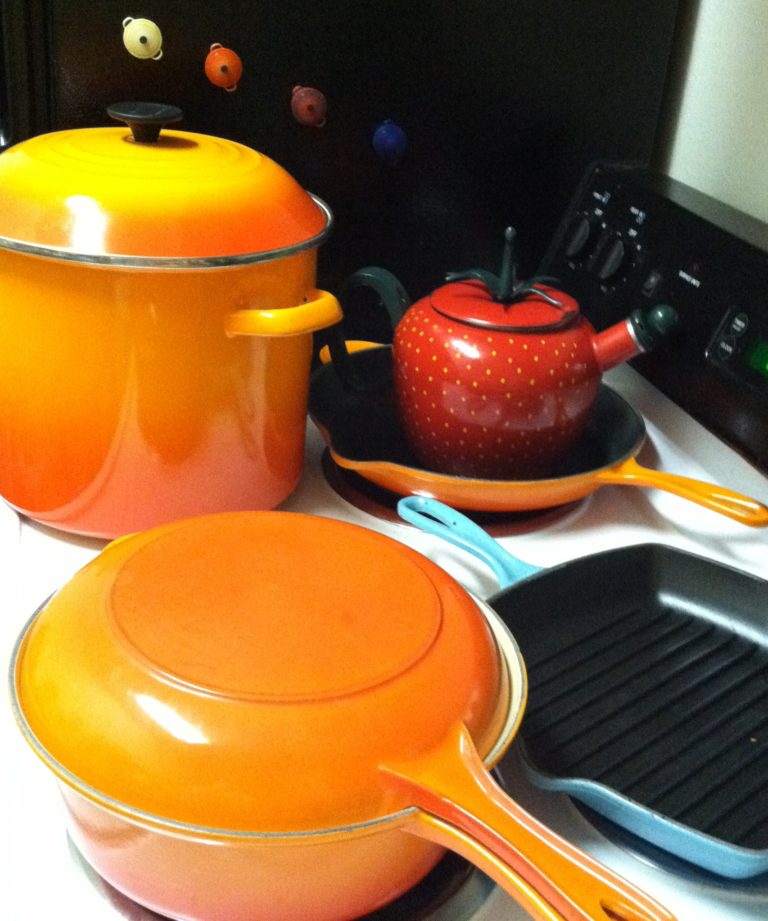If you want to invoke change in others, you shouldn’t be a food snob.
This weekend the Good Food festival is being held in Santa Monica. The festival offers everything you could want to learn about good, healthy food; how to get it and the policies surrounding it.
But even as a health food advocate, I worry that playing the “food police,” and forcing consumer change, can sometimes backfire. However, it seems that the goal of the Good Food festival is not to force change but to bring local farmers into the spotlight of local consumerism.
As I travel through the local farmers markets, I often eaves drop on the conversations of consumers and farmers. One question that often arises, “Is your produce organic?’ Sometime it is and sometimes the answer is, “Well, it’s not organically certified but we don’t use pesticides.” Sometimes the person will still buy the produce and sometimes they walk away, looking for that farmer who bears the expensive organic certification.
When I was completing my holistic culinary training, I learned this hierarchy of produce buying: Fresh, Local, Seasonal and if you can afford it, “Organic.”
I read a recent study showing that low-income people opt for empty-calorie processed foods over fresh foods because they can’t afford organic. They figure, why bother.
Most of our age related diseases are a result of the long term nutrient deficiencies we see in these people who aren’t eating enough produce; diseases such as dementia, heart disease and cancer.
When we first learned about nutrition and began identifying vitamins and minerals, the emphasis was on, “How much do we need to prevent deficiencies?” Ironically, this was around the same time we began to “process” foods. As long as most of the vitamins and minerals were present, food manufacturers figured that we would all be ok and they could make money by providing more convenient options for the increasing pace of the consumer.
Now we know we need more than just the minimal intake of vitamins and minerals, we need antioxidants too. No matter how food manufacturers try to put back all that is stripped away in processing, they will never replace what nature created in such perfect synergy. The only way to live long and thrive, and hopefully ward off long-term diseases, is to eat FRESH food, local if you can get it, seasonal if it’s available, and organic if you can afford it.
Don’t be a food snob. Be a FRESH food advocate and make the world a happier and healthier place for all.
Here’s my contribution. I created these recipes with some food that was given to me. While researching mercury in tuna, I learned that troll caught tuna, like that from Wild Planet foods, is lower in mercury because the fish are smaller and have accumulated less mercury in their bodies. I also learned that selenium, an essential mineral and powerful antioxidant, can bind to mercury making it less “biologically” available in your body. Tuna is one of the highest sources of selenium. Brazil nuts are even higher, with over one thousand percent of the Daily Value for selenium in a one ounce serving, about six nuts. I created this Tuna & Brazil Nut cake recipe as a way to help consumers safely eat tuna, a tasty, convenient and affordable source of protein and omega-3 fats.
I hope you enjoy these recipes as much as I did creating them. It’s food like this that will keep you disease free for life.
“The Kitchen Vixen is on a mission to save the world, one recipe at a time.”
Ready in 30 minutes • Makes 5 servings
2 (5-oz) cans Wild Planet light skipjack or albacore tuna
Juice of 1/2 lemon
1/8 yellow onion, minced
1/4 cup ground flax seeds
1/2 cup rolled oats
1/4 cup Greek yogurt
1/4 cup (1 oz-wt) Brazil nuts or mixed nuts with Brazil nuts
1/8 tsp black pepper
Preheat oven to 375 degrees
Grind nuts in a food processor.
Add remaining ingredients and pulse to combine thoroughly.
Shape into five evenly divided palm size portions.
Flatten on a baking tray lined with parchment paper
Bake for 10 minutes on each side
Serve each cake with 1/4 cup dip
Lemony Garlic Yogurt Dip
1 cup Greek yogurt
1 clove garlic, minced
Juice of 1/2 lemon
1/8 tsp black pepper
Cost per serving (1 Tuna Cake + 1/4 cup dip): $1.18
Nutrients per serving (5oz/ 149g): Calories: 203, Total Fats: 7 g, Omega-3 Fats: 1,220mg
Sodium: 31 mg, Total Carbohydrates: 12 g, Dietary Fiber: 3 g, Sugars: 1 g, Protein: 23 g
Omega-6: Omega-3 = 1.5:1, the goal is <4:1
% Daily Value (DV) For 1 Tuna Cake + 1/4 cup dip
Selenium: 309% – Niacin: 40% – Manganese: 28% – B-12: 28% – Vitamin D: 23% – Phosphorus: 20% – B6:15% – Copper: 11% – Thiamin: 10% – Iron: 10% – Calcium: 10% – Vitamin C: 10% – Zinc: 8% – Potassium: 7% – Folate: 6% – Vitamin E: 5% – Riboflavin: 4% – Vitamin A: 1%
White String Bean & Red Potato Salad
Ready in 20 minutes • Makes 9 servings
1 lb white string beans or green beans, cut in inch pieces
1 lb red potatoes, small diced
1 small red pepper, cut into 1 inch long, thin slices
1/4 red onion, cut into 1 inch long, thin slices
Dressing
Juice of one lemon
3 cloves garlic, minced
2 tsp chopped fresh thyme
1/4 cup Extra Virgin olive oil
1/8 tsp black pepper
Place a steamer basket inside a large pot of boiling water.
Add diced potatoes. Place a lid on the pot. Steam until potatoes are soft when pierced with a fork, about 10 minutes.
Add string beans and steam another 3 minutes.
Remove string beans and potatoes from the pot.
Submerge in a bowl of ice water to stop the cooking process.
Drain water. Add red onion and red pepper.
Combine with dressing, cover with plastic wrap.
Let marinade in the refrigerator for at least one hour before serving.
Cost per serving (1 cup): $0.93
Nutrients per serving (4.6oz/ 130g): Calories: 134, Total Fats: 6 g, Omega-3 Fats: 60mg
Sodium: 7 mg, Total Carbohydrates: 18 g, Dietary Fiber: 3 g, Sugars: 3 g, Protein: 2 g
Omega-6: Omega-3 = 1.8:1, the goal is <4:1
% Daily Value (DV) For 1 cup string bean & potato salad
Vitamin C: 72% – Manganese: 13% – B6:13% – Vitamin A: 11% – Copper: 10% – Potassium: 10% – Niacin: 9% – Magnesium: 7% – Iron: 7% – Thiamin: 7% – Folate: 7% – Phosphorus: 5% – Vitamin E: 5% – Riboflavin: 4% – Calcium: 3% – Zinc: 2% – Selenium: 1% – B-12: 0% – Vitamin D: 0%
One Tuna Cake w/ 1/4 cup Lemony Garlic Dip & 1 cup White String Bean & Red Potato Salad
Cost per serving: $2.10
Nutrients per serving (10oz/ 279g): Calories: 337, Total Fats: 13 g, Omega-3 Fats: 1,280mg Sodium: 31 mg, Total Carbohydrates: 30 g, Dietary Fiber: 7 g, Sugars: 6 g, Protein: 25 g Omega-6: Omega-3 = 1.8:1, the goal is <4:1
% Daily Value (DV) For 1 Tuna Cake + 1/4 cup dip + 1 cup string bean & potato salad Selenium: 311% – Vitamin C: 83% – Niacin: 45% – Manganese: 41% – B-12: 28% – B6:28% – Phosphorus: 25% – Vitamin D: 23% – Copper: 21% – Iron: 18% – Potassium: 18% – Thiamin: 17% – Calcium: 13% – Folate: 13% – Vitamin A: 12% – Vitamin E: 11% – Zinc: 10% – Riboflavin: 9%




